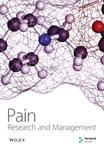The Relationship Among Psychological Factors, Neglect-Like Symptoms And Postoperative Pain After Total Knee Arthroplasty
Abstract
BACKGROUND: Persistent postoperative pain has a significant relationship with patient health and satisfaction.
OBJECTIVES: To investigate the prevalence and association of neglect-like symptoms (NLS) and other psychological factors on postoperative pain in patients following total knee arthroplasty (TKA). NLS are defined as the loss of perception of the limb with pain and excessive effort required to move the limb. The authors hypothesized that NLS were an important contributor to postoperative pain.
METHODS: The factors influencing pain were investigated using a longitudinal study with assessments at three and six weeks postsurgery. The relationships among demographic factors (age, body weight, body mass index), psychological factors (State-Trait Anxiety Inventory and Pain Catastrophizing Scale [PCS]) and NLS with postoperative pain were investigated in 90 patients after TKA. The associations among motor functions (muscle strength of knee extension, range of motion), sensory functions (joint position sense and two-point discrimination in the thigh) and NLS were also investigated.
RESULTS: At three and six weeks after surgery, 36% and 19% of patients, respectively, experienced NLS. In hierarchical multiple regression analysis, NLS and PCS scores were significantly associated with postoperative pain, while joint position sense and range of motion were significantly associated with NLS.
CONCLUSIONS: These results suggest that facilitation of sensory integration is important in rehabilitation after TKA because NLS appears to result from impaired sensory integration. The association of PCS scores with postoperative pain and NLS suggests the need to provide appropriate postoperative education to reduce persistent negative thoughts regarding future pain.




